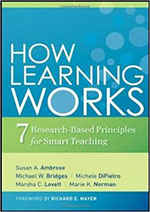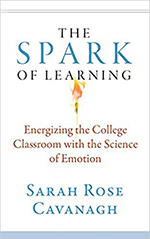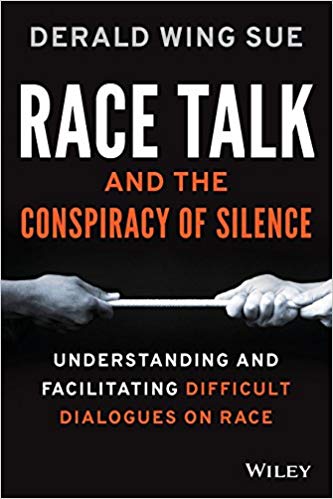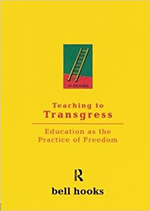Preparing for Fall
We hope your summer has been restorative and productive, and that you’re excited for the fresh semester ahead of us. As we gear up for a new academic year, there are some important questions to ask ourselves.
Who are our students?
On August 26, FSU will welcome a diverse and talented class of around 7,200 first-year students, selected from almost 60,000 applicants. The entering class has an average GPA of 4.1, an average ACT score of 28, and an average SAT score of 1274. Approximately 25% are first-generation college students, and about 27% are eligible for Pell grants. They come from 44 states and 14 countries. Almost a quarter of FSU undergrads are Hispanic, and about 9% are Black.
You can learn more about your own class in the first days of the semester by any number of means: surveys, writing assignments, index cards, even intro videos posted to Canvas. You’ll want to discover who they are as well as what they already know. (Here’s a list of sample prompts from Berkeley).
What do they need to learn?
What do you really want your students to know or to be able to do when they’ve successfully completed your course? How will they be changed by the semester they spend with you? Will they make different connections, different decisions? We need to provide learning opportunities that will help them to grow and stretch, so some of your goals may address mindsets, perspectives, values, or habits, as well as concepts.
Working backwards from meaningful, relevant goals for student learning will help you craft a powerful course. When we allow a reading list or textbook, rather than our goals, to shape our course design, we tend to pack in too much, so we don’t leave room for students to grow as thinkers. Learning requires reflection, practice, and feedback–so (paradoxically) too much content can hamper learning (Nelson, 1999).
How will we know they’re learning?
After you’ve fine-tuned your goals, you can take a closer look at the alignment among the goals, the ways you attempt to measure students’ progress, and the practice and feedback they get along the way. Assignments and exams are some of the ways we gather evidence of students’ learning, and help them evaluate their own progress. Fink (2003) points out that “when we become clear about what constitutes successful student performance, it is much easier to develop effective teaching/learning activities.”
How will we use their time?
The work we ask them to do, both inside and outside of class, should provide frequent opportunities for students to get practice and feedback. As Terry Doyle (2011) reminds us, “the one who does the work does the learning.” The more students have to do—the more they have to think through, puzzle out, solve, inquire, explore—the more they’ll learn. When we let students do the work, we guide them through the thinking processes we want them to practice, but they have to do the thinking for themselves.
Making that thinking “visible” will require students to do lots of talking, writing, and collaborating. Classroom Assessment Techniques offer opportunities for practice and feedback during class time. (Great tips on group work, including how to form the groups and design effective assignments, are available here.) Clickers and games like Kahoot can help you create a loop of immediate feedback, letting you and your students gauge their progress and identify trouble spots, so that you can both get back on track.
How will we communicate with them about their learning?
Your syllabus is the document that introduces students to your course design. It’s their first (written) point of contact with your course, and you can craft it to be a learning guide. (The ever-longer list of course policies and any abstruse language added to conform to accrediting standards can wait until the end of the document, or occupy an easy-to-find place on Canvas. That way your syllabus can be an opportunity to motivate your students.) Ken Bain, in What the Best College Teachers Do (2004), describes a “promising syllabus” as one that makes a promise to students about what they can expect to gain as a result of the class; describes the course activities designed to fulfill this promise; and “begins a conversation about how the teacher and the student would best come to understand the nature and progress of the student’s learning.”
Your grading criteria are also an important form of communication (Cox, 2009). By assigning points to the work students need to do in order to learn effectively, you instruct them how to use their time. If all of the weight rests on a couple of exams or major projects, students will be very likely to cram for these high-stakes tests, rather than keeping up with daily work.
A learning-centered syllabus includes learning goals that students can understand and value; descriptions of all major assessments and their relation to the learning goals; and a sense of how the class will be conducted to support their learning–all phrased in a positive, respectful, and inviting way. You can use this checklist to make sure your document sets the tone for a productive, learning-filled semester.
If you’d like feedback on your syllabus, please consider attending one of our Syllabus Clinics next week: Wednesday August 21 and Thursday August 22 from 2:00-4:00, in 432 DIF. You can drop by any time during the clinic. We can help you determine what your syllabus says about you and your course; fine tune your learning objectives, grading scheme, or assignments; or review any other part of your syllabus.
We look forward to working with you. Welcome Back!
Upcoming…
Sign Up Now for Faculty Reading Groups:
CAT’s faculty reading groups are a great chance to connect with colleagues from across the university, delve into the research on learning, and share practical strategies for making your classes even more effective. Each group will involve a series of three meetings, so please check your calendar to make sure you can attend. Space is limited.
RSVP here, and we’ll send you your complimentary copy of the book. All meetings will be held in 432 Diffenbaugh.
We look forward to working with you!
Reading Groups
Faculty reading groups are a great chance to connect with colleagues from across the university, delve into the research on learning, and share practical strategies for making your classes even more effective. Each group will involve a series of three meetings, so please check your calendar to make sure you can attend. Space is limited. RSVP here, and we’ll send you your complimentary copy of the book. We look forward to working with you!
 How Learning Works
How Learning Works
Tuesdays, 12:00-2:00
9/10, 9/17, 9/24
This book distills the research on cognition, translating decades of scientific literature into practical advice for university faculty and introducing seven general principles of how people learn. The authors draw on research from cognitive, developmental, and social psychology, as well as educational research, anthropology, etc. The discussion spans issues from memory to motivation, integrating theory with real-classroom examples in practice. Participants will develop strategies for strengthening their own teaching through the application of these principles of cognitive psychology.
Please feel welcome to bring your lunch to this brown-bag lunch-hour session.
 The Spark of Learning: Energizing the College Classroom with the Science of Emotion
The Spark of Learning: Energizing the College Classroom with the Science of Emotion
Thursdays, 2:00–4:00
9/12, 9/19, 9/26
Most of our preparation for teaching (both our training and our planning) focuses on the content, and the thinking students need to do, but Sarah Rose Cavanagh reminds us that learning is a highly emotional process. Anxiety and fear hamper learning, while powerful positive emotions can enhance it. Cavanagh offers concrete strategies for harnessing the power of emotion to galvanize learning.
 Race Talk and the Conspiracy of Silence: Understanding and Facilitating Difficult Dialogues on Race
Race Talk and the Conspiracy of Silence: Understanding and Facilitating Difficult Dialogues on Race
Tuesdays, 2:00-4:00
9/17, 9/24, 10/1
Faculty often feel unprepared for the difficult dialogues or inter-group conflicts that may arise in class, but navigating these discussions is important for students’ learning and for maintaining a productive classroom environment. Derald Wing Sue’s book unites quantitative and qualitative research, providing numerous examples and analyses of complex and challenging conversations. This reading group will use his analysis and advice to interpret dynamics in our own classrooms and prepare to handle them more effectively. Facilitated by Jonathan Jackson, from FSU’s College of Business.
 Teaching To Transgress
Teaching To Transgress
Tuesdays, 2:00-4:00
10/8, 10/15, 10/22
Hooks challenges the “banking” model of learning, where education is envisioned as an accumulation of received wisdom. She argues that instead, education must be a process of empowerment and liberation, in which students learn to question, to resist, and to find their own place in a larger conversation. She asks us as educators to examine our own assumptions, biases, and privileges, so that we can better reach our students, and offer them a truly transformational education. Participants will develop strategies for putting these ideas into practice.



